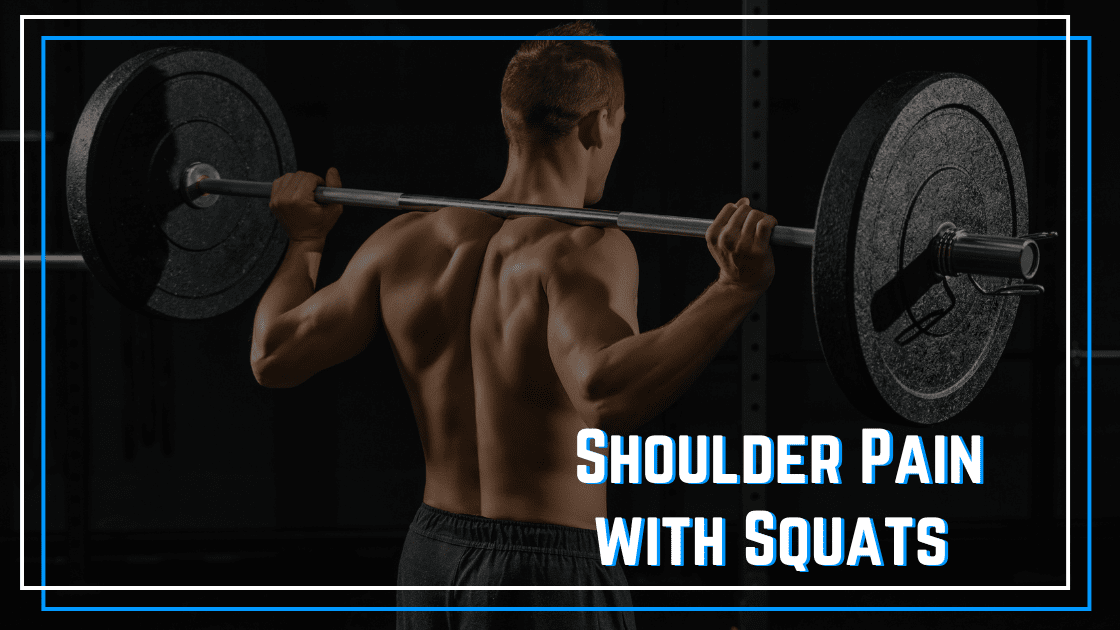Many athletes trying to push their squat weight up end up dealing with shoulder pain with squatting. While we don’t commonly associate the back squat with upper-body injuries, this is far more common than you might think. But breaking down your upper body mobility and addressing tightness can help alleviate this issue while you use other squat variations to continue progressing without pain.
Squat Mobility Demands
I’ve previously written many times about the lower body mobility demands of the squat. But when we add in the upper body there are three areas I will address in athletes dealing having shoulder pain with squats.
Thoracic Mobility
The upper back is a crucial mobility piece for many athletic movements. Specific to the squat if your upper back is stiff and stuck in a bit of extra flexion then your shoulders will have to pick up the slack and go into extreme ranges of motion. So the thoracic spine is the first area that I examine.
To test thoracic spine rotation/extension mobility, begin sitting on knees with your butt on your heels. Place one forearm on the ground and the other behind your back. Rotate towards the up hand. 50 degrees of rotation should be available each direction (shoulders relative to the ground).
For a detailed thoracic spine mobility plan, see our Thoracic Mobility Overhaul program.
Shoulder External Rotation
Up next I’ll assess shoulder external rotation. The following video shows how to test your shoulders!
Shoulder Pain with Squats
Suggested Variations
At times, especially after a serious shoulder injury or surgery, we need to adapt squat variations in our training that reduce the stress on the shoulder. For example, after shoulder surgeries, most athletes shouldn’t back squat until 12+ weeks after the surgery. That’s a long time to go without heavy loaded squats. But the following variations will allow us to train the squat earlier in the rehab process.
Specialty Bars
There are a number of different specialty bars out there that take stress off of the shoulder. Most commonly you’ll see Safety Squat Bars recommended as this variation has the arms holding a low handle in front of the chest.
My preferred Safety Squat bar is the Transformer Bar by Kabuki Strength as it allows for changing where the load is placed to more closely mimic different squat variations. The padding on this bar is also nicer than any other SSB I’ve used. For a cheaper option, Titan Fitness has a very affordable safety squat bar.
Hatfield Squats
Hatfield squats can be another great way to put significant load on the legs without the shoulder mobility demands that your traditional back squat requires. This variation does require the use of a safety squat bar.
Belt Squats
Finally, belt squats are another option as it takes the upper body completely out of the movement. . This is my go-to squat variations for athletes after shoulder surgery.
View this post on Instagram






